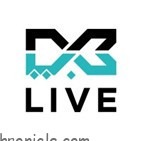
New business owners have a myriad of tasks to navigate. While your main objectives may be selling to your customers and driving growth, it’s also essential to keep a firm handle on the administrative and compliance duties. Ultimately, while a good accountant can help you with most of the work, you still need to be familiar with some basic accounting terms and concepts to run your business successfully.
Learning about basic tax and accounting terms will help you communicate more effectively with your accountant or bookkeeper. It enables you to better understand what is happening within your business to optimise performance. Here are definitions of six accounting terms you may hear as you come to grips with your finances.
Annual financial statements
The yearly financial statement is a set of documents that shows the performance of the business and its financial position as its fiscal year ended. This set of documents typically includes a balance sheet, an income statement, a cash flow statement, and a statement of changes in equity. Having a modern accounting system in place can help you generate your balance sheet, income statement, and cash flow statement with the touch of a button, provided you have recorded all your transactions accurately throughout the year.
Cash flow
Cash flow is the amount of money flowing in and out of your bank account. Essentially, this is the income you receive through customer payments, interest, and other sources versus the money you spend on business expenses. It’s one of the most critical measures of a business’s health since a business can record significant sales, yet run out of cash because it needs to pay expenses before its customers pay. A cash flow statement is a financial statement that summarises the cash and cash equivalents entering and leaving your bank accounts.
Income statement
The income statement tells the story of your company’s financial activity for a month, year or quarter. It depicts the income you’ve earned, minus your expenses, to show the net profit or revenue you’ve generated for the period under review. An income statement is not only necessary for VAT compliance but also to help track business performance.
Balance sheet
A balance sheet is a financial statement that paints a picture of a company’s financial position at a particular moment in time. The key elements of a balance sheet are assets, liabilities, and equity (the value of any assets that the owners can claim). The assets must equal – or balance with – the liabilities and equity.
Gross profit and net profit
Gross profit is how much profit your business makes after deducting the direct cost of the goods or services you sold. For instance, if you paid USD 250,000 for all the widgets you sold during the year for USD 300,000, your gross profit is USD 50,000. Net profit is the profit you make after all other operating expenses are included, such as payroll, depreciation, and rent.
Asset, depreciation, liabilities
Assets are the things your company owns, including current assets such as cash and inventory and fixed assets such as buildings, land, tools, equipment, vehicles, and furniture.
Depreciation is a way of calculating how the value of an asset, such as a vehicle or computer declines over its lifespan. Each year, you would charge this value to your expenses until the asset’s value has been used up (also called ‘writing off’ an asset).
Liabilities refer to what your business owes to banks, suppliers, and other creditors. It includes current liabilities like overdrafts, credit cards, supplier credit, and long-term liabilities (usually more than a year) like bonds and mortgages.




























